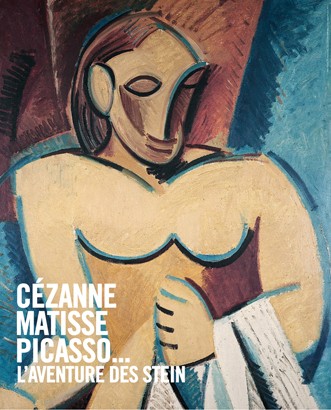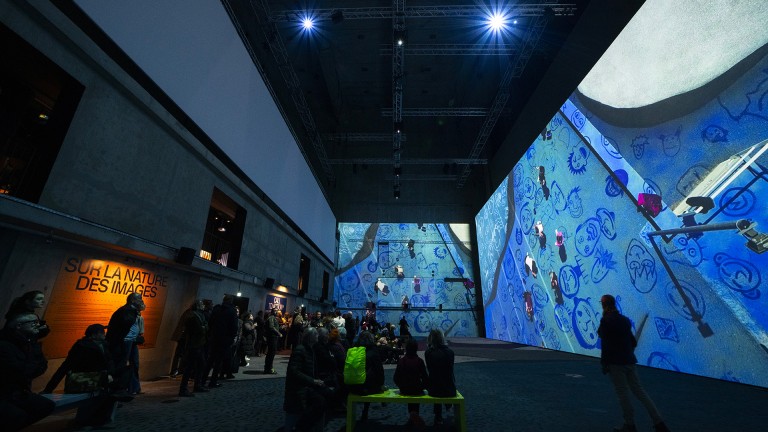Matisse, Cézanne, Picasso… The Stein Family
From 5 October 2011 To 22 January 2012
- Description
- Prices
On show in the San Francisco Museum of Modern Art from 21 May to 6 September 2011, and will be shown at the Metropolitan Museum of Art, New York from 1st February to 3 June 2012.
Barefoot in their Delphic sandals, they raised scientific brows to the sky. Apollinaire [about the Steins], October 1907
The Steins, an American family, moved to Paris in the early 20th century: Gertrude, an avant-garde writer, set up house with her brother Leo, in the rue de Fleurus; her elder brother Michael took a flat with his wife Sarah in the rue Madame. They were the first people to buy Matisses and Picassos and they also received the entire avant-garde into their homes and thus built up one of the most astonishing collections of modern art.
The exhibition looks at the history of this out-of-the-ordinary family. It shows how important its patronage was for the artists and how it helped establish a new standard of taste in modern art, through Leo's view of the sources of modernity and his exchanges with the intellectuals of the time; Gertrude's friendship with Picasso; Sarah's relations with Matisse; and the projects that Gertrude developed with artists in the 20s and 30s.
It is a major exhibition bringing together an outstanding ensemble of works from the Steins' various collections: Renoir, Cézanne, Picasso, Matisse, Manguin, Bonnard, Vallotton, Laurencin, Gris, Masson, Picabia….
The eight sections shed light on all the members of the family: Leo, Sarah and Michael, and Gertrude.
I “The Big Four”
: Manet, Renoir, Degas and Cezanne, the Pillars of Modern Art. Leo Stein, a young American fascinated by European art, moved to Paris in 1902 and developed his eye through discussions with theorists and art historians such as Berenson and attending exhibitions in Paris at the beginning of the century. He formed his own collection based on a specific aesthetic: Manet, Degas, Renoir and Cézanne were the pillars of modern art.
II The Classical Tradition vs Modernity.
Leo, joined by his sister, Gertrude, and then by his brother Michael and his wife Sarah, was the impetus behind their first purchases, which showed a taste for a classical form of modernity, descending from Manet and great Italian painting: Manguin, Vallotton, Maurice Denis, and Picassos from the blue and pink periods. He put together an astonishing collection on the classical theme of the reclining nude – including Matisse's masterly {Blue Nude, Souvenir of Biskra} – which reminded him of the powerful scheme of Urbino's {Venus}, revisited by Manet's {Olympia}.
III The “Fauve” Revelation, 1905 Salon d'Automne.
Leo bought Matisse's {La Femme au chapeau} ({Woman in a Hat}), which had caused a scandal at the 1905 Salon d'Automne. It was emblematic of the Steins' avant-garde approach to collecting. Sarah next bought Matisse's {La Raie verte} ({The Green Line}), another of the misunderstood masterpieces from the mythical {Salle des Fauves}.
IV Saturdays at the Steins'.
Michael and Sarah Stein lived with their son Allan at 58 de la rue Madame while Gertrude and Leo had an apartment at 27 rue de Fleurus. Both hosted salons which attracted the Parisian art scene: foreigners passing through and Parisian artists and intellectuals flocked to them, hoping to see the works of the two champions of the collection, Matisse and Picasso. Braque, Apollinaire, Picabia, Duchamp, Man Ray, Gris, Laurencin, Masson, as well as American writers, Hemingway, Sherwood Anderson, Fitzgerald… gathered there to see Matisse's {La Joie de vivre} ({Joy of Life}) and {Nu bleu} de Biskra ({Blue Nude}, Biskra), Picasso's {Les Trois Femmes} ({Three Women}) and Cézanne's {Portrait de Madame Cézanne}.
{La Joie de vivre} and {Nu bleu} de Biskra, Picasso's {Les Trois Femmes} and Cézanne's {Portrait de Madame Cézanne}.
V Matisse.
A Complete, Sensitive Collection. Sarah and Michael Stein became friends with Matisse and were the first great defenders of his art. They put together an outstanding collection before the First World War. Sarah persuaded Matisse to open an Academy and joined many other foreign artists in his classes. She supported Matisse's determination to explain his art through writing and teaching. In 1914, the Steins agreed to lend nineteen of their finest canvases to Berlin, for an exhibition in Fritz Gurlitt's Gallery. The war blocked their works in Germany and they were never recovered. In 1928 they moved into a villa that Le Corbusier built for them at Garches and lived there until 1935 when the rising fascist threat prompted their return to the United States.
VI Gertrude Stein and Picasso.
Picasso offered to paint Gertrude Stein's portrait in 1906 and they became close friends. That was when she began to write her monumental book, {The Making of Americans}, which was deeply influenced by Cézanne's painting (especially the {Portrait de Femme} ({Portrait of a Woman}) which she bought from Vollard) and her discussions with Picasso. They were both keenly interested in realism and the object, and developed a relatively hermetic discourse – one was literary, based on repetition and the other was pictorial, based on the decomposition of volumes.
Gertrude and Leo both supported Picasso during his experimental work on {Les Demoiselles d'Avignon}, buying an outstanding book of studies and the large painting, {Nu à la serviette} ({Nude with Towel}), 1907.
When brother and sister went their separate ways in 1913, Gertrude continued to buy Picasso's Cubist paintings.
VII 1920-1930: Post-Cubism and the Neo-Romantics.
After the war, the artists that the Steins had supported became very famous and financially out of reach. Gertrude Stein, who was close to Kahnweiler, nevertheless continued to support the post Cubist production of artists like Gris, Braque, Masson… in the 1920s. When Leo moved to Italy, and Michael and Sarah went back to San Francisco, Gertrude divided her time between Paris and her house at Bilignin (Ain). She defended a group of young painters, the neo-Humanists Francis Rose, Bérard, Tchelitchew, as well as the later work of Picabia, the “Transparents” and hyper realism. Before her death in 1946 she witnessed the emergence of informal abstraction with Atlan's early works.
VIII Gertrude Stein, Portraits and Homage.
Her engagement alongside her companion Alice Toklas with the American Red Cross during the war made Gertrude Stein a popular figure and her fame was amplified by the publication of {The Autobiography of Alice B. Toklas} in 1933. The many portraits made of her (Vallotton, Cecil Beaton, Man Ray, Jo Davidson, Jacques Lipchitz, Dora Maar, Marcoussis, Picabia, Rose, Tchelitchew, Nadelman…) helped construct a myth.
The exhibition has been made possible with the support of www.StateStreet.fr
Curator
:
Cécile Debray, curator, Musée national d'art moderne - Centre Georges Pompidou, Paris
Useful Information
Open
Open every day :
From Friday to monday from 9 a.m. to 10 p.m.,
Tuesdays from 9 a.m. to 2 p.m.,
Wednesday from 10 a.m. to 10 p.m.,
Thursdays from 10 a.m. to 8 p.m.
During school holidays, open every day from 9 a.m. to 11 p.m., Tuesdays included.
Exceptional closing at 6 p.m. on 24 and 31 December. Closed on 25 December.
Access
metro line 1 Champs-Elysées-Clemenceau
Audioguides
:
in French, English, German, Italian, Spanish , 5 €
video guide for children
Publications
at the Rmn-Grand Palais, Paris, 2011
- Exhibition catalogue
- Exhibition album
- Petit Journal
- Stein exhibition


